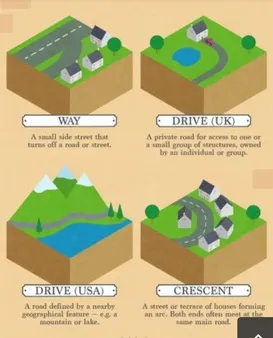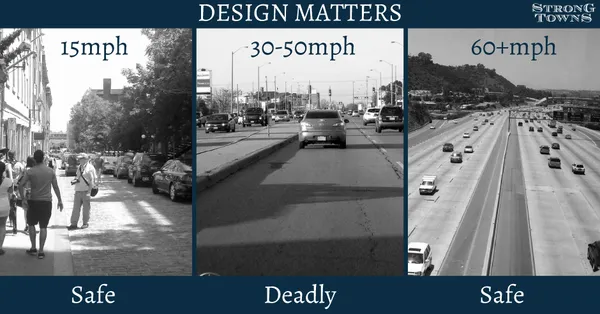Table of Contents
In the realm of urban design, The difference between street types unveils a tapestry of intricacies that shape our cities and towns. From the bustling city streets to the serene country lanes, each roadway holds its own unique character and purpose. At Kizworld, we embark on a journey to unravel the distinctions between street, avenue, boulevard, lane, drive, and road, exploring the factors that influence their usage and the stories they hold. Discover the nuances of these thoroughfares and gain a deeper understanding of the vital role they play in shaping our communities.
The Difference Between Street and Avenue: A Comprehensive Guide
I. Street vs. Avenue
Street vs. Avenue
What is a Street?
A street is a public thoroughfare typically used by wheeled vehicles in cities and towns. Streets may vary in width, length, and design, but they generally serve as a means of transportation and access to buildings and businesses. Streets can be composed of various materials, including asphalt, concrete, or brick. They may also feature sidewalks, curbs, and streetlights for pedestrian safety and convenience. Streets often play a significant role in the character and atmosphere of a city or town.
- Related Post: The Difference Between Street, Avenue, Boulevard, Lane, Drive, and Road
- Related Post: How to Choose the Right Street Name
What is an Avenue?
An avenue is a wide, typically tree-lined street, often found in cities and towns. Avenues are often designed to be grand and impressive, with wide sidewalks, elaborate landscaping, and sometimes monuments or statues. They may also serve as important transportation corridors, connecting different parts of a city or town. Avenues often serve as prominent landmarks and focal points in a city's urban landscape.
Street | Avenue |
|---|---|
Typically narrower | Wider than a street |
Generally less tree-lined | Typically tree-lined |
Often serves as a local road | Often serves as a major transportation corridor |
May have sidewalks and curbs | Often has wide sidewalks and elaborate landscaping |
Can be found in both residential and commercial areas | Often found in commercial and business districts |
Differences in Usage
Streets and avenues serve different purposes and are used in different contexts. Streets are typically used for local transportation and access to buildings and businesses. They can be found in both residential and commercial areas. Avenues, on the other hand, are often used as major transportation corridors and are often found in commercial and business districts. They may also serve as ceremonial routes for parades and other events.
- Related Post: The Benefits of Walking for Health and Fitness
- Related Post: How to Stay Safe While Walking in the City
Examples of Streets and Avenues
Some examples of famous streets include Wall Street in New York City, Oxford Street in London, and Champs-Elysees in Paris. Examples of famous avenues include Pennsylvania Avenue in Washington, D.C., Michigan Avenue in Chicago, and Las Vegas Boulevard in Las Vegas.
II. Street vs. Road
Street vs. Road
Often, the terms "street" and "road" are used interchangeably, but the two terms have distinct differences in urban design and transportation planning.
Streets are typically designed to provide access to properties along the way, while roads are designed to facilitate the movement of traffic. Streets often have sidewalks, streetlights, and other features to make them safe and convenient for pedestrians, while roads may not have these features.
Feature | Street | Road |
|---|---|---|
Primary Purpose | Access to properties | Movement of traffic |
Sidewalks | Often present | May not be present |
Streetlights | Often present | May not be present |
Speed Limit | Typically lower | Typically higher |
Traffic Volume | Lower | Higher |
In general, streets are found in residential and commercial areas, while roads are found in rural and suburban areas. However, there are many exceptions to this rule, and there are many streets in rural areas and roads in urban areas.
Here are some examples of streets and roads in different locations:
- Street: Main Street, Anytown, USA
- Road: State Route 1, California
- Street: Oxford Street, London, UK
- Road: Autobahn, Germany
Ultimately, the difference between a street and a road is a matter of design and function. Streets are designed to serve the needs of pedestrians and local traffic, while roads are designed to facilitate the movement of vehicles over long distances.
III. How to Choose the Right Street Name
Choosing the right street name is an important part of urban planning. The name of a street can reflect the history of the area, the culture of the community, or the natural features of the landscape.
When choosing a street name, it is important to consider the following factors:
- The history of the area
- The culture of the community
- The natural features of the landscape
- The length and width of the street
- The type of traffic that will use the street
It is also important to avoid choosing street names that are already in use in the area, or that are too similar to other street names. This can lead to confusion and inconvenience.
Here are some examples of well-chosen street names:
- Cherry Blossom Lane, Washington, D.C.
- Hollywood Boulevard, Los Angeles, California
- Bourbon Street, New Orleans, Louisiana
- Abbey Road, London, UK
- Champs-Élysées, Paris, France
These street names are memorable and reflect the character of the area in which they are located.
By following these tips, you can choose a street name that is both appropriate and meaningful.
Related Posts
- How to Get Started with Gymnastics as an Adult
- The Most Common Gymnastics Mistakes and How to Fix Them
- How to Do a Handstand
IV. Street vs. Boulevard
Street vs. Boulevard
In the tapestry of urban design, streets and boulevards serve as distinctive threads, each weaving its own unique character into the fabric of our cities and towns.
Streets are typically narrower, local thoroughfares that provide direct access to residential and commercial properties.
Street | Boulevard | |
|---|---|---|
Purpose | Local access | Major artery |
Width | Narrower | Wider |
Traffic | Lower volume | Higher volume |
Speed Limit | Slower | Faster |
Parking | Allowed | May be restricted |
Trees | May or may not have trees | Typically have trees |
Buildings | Directly adjacent | May be set back from the road |
Boulevards, on the other hand, are broader, more prominent roadways designed for the efficient movement of traffic. They often serve as major arteries, connecting different parts of a city or town.
Here is a table comparing boulevards:
The Best Gymnastics Games and Activities for Kids
V. Street vs. Lane
Street vs. Lane
In the tapestry of urban design, streets and lanes serve as the threads that weave together the fabric of our communities. While both are thoroughfares, they differ in several key aspects, including their width, purpose, and traffic volume.
Streets are typically wider than lanes, allowing for more traffic flow and accommodating a variety of vehicles, including cars, trucks, and buses. Lanes, on the other hand, are narrower and primarily designed for local traffic and pedestrian access. They often run parallel to streets and provide a more direct route for residents and businesses in a particular area.
Feature | Street | Lane |
|---|---|---|
Width | Wider | Narrower |
Purpose | Main thoroughfare for traffic | Local traffic and pedestrian access |
Traffic Volume | Higher | Lower |
Another distinction between streets and lanes lies in their traffic volume. Streets, being major thoroughfares, typically experience higher traffic volumes compared to lanes. This is due to their role in connecting different parts of a city or town and facilitating the movement of goods and people.
In contrast, lanes carry less traffic, as they are intended for local use and provide access to specific properties or neighborhoods. The lower traffic volume on lanes makes them safer for pedestrians and cyclists, promoting a more walkable and bikeable environment.
In conclusion, streets and lanes play distinct roles in the urban landscape. Streets serve as the primary arteries for traffic flow, while lanes provide local access and enhance the livability of neighborhoods. Understanding the differences between these two types of roadways is essential for effective urban planning and transportation management.
Related Posts:
- The Difference Between Street and Road
- The Difference Between Avenue and Boulevard
- The Difference Between Drive and Parkway
VI. Conclusion
As we navigate the intricate network of streets, avenues, boulevards, lanes, drives, and roads, we appreciate the unique contributions each roadway type makes to our urban landscapes. From the grand boulevards lined with historic architecture to the charming lanes hidden away from the hustle and bustle, these thoroughfares shape our daily lives and create a sense of place. Understanding the differences between street types allows us to better appreciate the design and functionality of our communities, fostering a deeper connection to the spaces we inhabit.